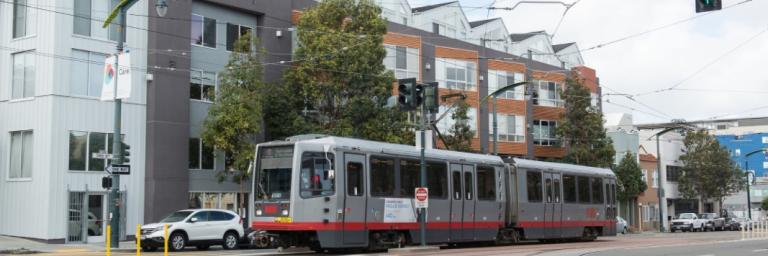The Connected Corridor Project seeks to evaluate the use of transit platform & traffic signal sensors to inform signal timing adjustments and collect information to support safety improvement efforts. The Project is funded through the United States Department of Transportation (USDOT) via the Federal Highway Administration's (FHWA) Advanced Transportation and Congestion Management Technologies Deployment (ATCMTD) grant.
- Completed
Project Goals
- Increase safety for all modes
- Reduce public transit travel time
- Reduce signal delays
- Reduce idling and greenhouse gas (GHG) emissions
Project Location
The project corridor is on 3rd Street, from Channel to 20th Streets.
Key Findings
- Transit experienced notable improvements, with red-light delays reduced by 73% and travel times reduced by 15%.
- LRV travel times across the 10-intersection test corridor were reduced by an average of 66 seconds, from 424 seconds to 358 seconds.
- The average amount of LRV red-light delay decreased 44 seconds, from 60 seconds to 16 seconds, along the test corridor.
- These benefits were realized without placing a significant burden on other vehicles or pedestrians.
- Final Evaluation Report
Next Steps
- Explore opportunities to build upon Proof of Concept work and determine whether the benefits of a dynamic traffic signal optimization system can be sustained over an extended period and over a longer corridor
Project History
The SFMTA originally developed the Connected Corridor Project as part of the city’s 2016 Smart City Challenge proposal to the USDOT. Though this grant was ultimately awarded to Columbus, Ohio, San Francisco was one of seven finalists for the award and was able to pursue other opportunities to advance elements of the Smart City Challenge. From these efforts, the city received an $11 million grant the ATCMTD program, to pursue the Connected Corridor Project and other elements of the Smart City Challenge proposal.
